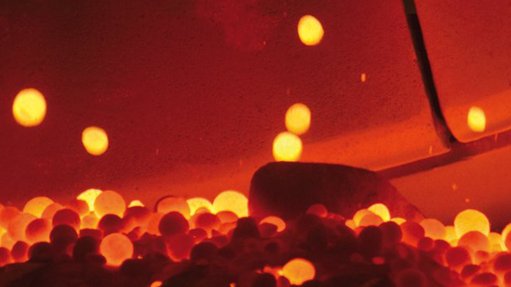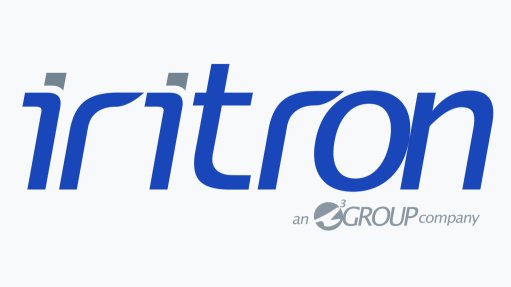Modern technology boosts construction deployment time
Modern technology has transformed the construction industry, says diverse prefabricated deployment solutions company Turnkey Modular, which has implemented its robust Intelligent Component Design and System Assembly (ICSA) technology to deliver units for mine-site accommodation in less deployment time.
The Turnkey–Archway technology works in parallel with its ICSA technology, and the value largely lies in using intelligently designed componentry, says Turnkey Modular MD Warwick Jackson.
He says ICSA offers the privilege to “do away” with the need for two-dimensional blueprints, as it employs three-dimensional (3D) models and 3D construction systems.
The Turnkey solution uses computer-aided design software to create detailed plans for every component of a building, which are used to guide the manufacturing process of the prefabricated building components. This ensures that every component produced is to exact specifications.
With the implementation of ICSA, there is no need for highly skilled artisans to try to replicate what any given blueprint or architect calls for, says Jackson, adding that the Turnkey system ensures that all the requirements and specifications for a house’s design starts as a flat plate. This plate is then computer numerically control cut and formed into millimetre accurate components, which, in turn, translate into a “structural building block” for the house.
This process is completed without human intervention, he adds.
The components are then packaged into a kit that comprises the necessary “building blocks” and materials for that particular house.
The technology has been deployed in the Democratic Republic of Congo (DRC) for mine-based housing for 250 personnel but has also been deployed in countless other commercial and domestic applications.
“For modern solutions and/or technologies to gain any ground in the construction industry, they must exceed the minimum requirements of a traditional brick-and-mortar house.”
Jackson adds that the Turnkey–Archway solution outperforms the traditional brick house in various aspects, including thermal performance, longevity and fire ratings.
The Turnkey–Archway technology uses cellulose cement, which is completely infused with small cells made using a foaming agent, producing vastly superior thermal properties and material optimisation.
“Building through ICSA requires far fewer resources, reducing construction costs by around 5% to 10%.”
Further, the dimensions and mass of a standard building brick results in an average house being constructed from many thousands of blocks. Meanwhile, the building blocks created by ICSA, using 3D modelling and pre-manufactured light weight steel construction, mean that an entire house can be assembled from as few as 25 pieces in a matter of hours. The precision and in-built intelligence of each of these components “short-circuits” the need for information transfer to artisans on site. With the lightweight steel structure in place the rest of the wet works can continue.
Construction is, therefore, completed significantly faster than that of traditional structures, Jackson adds.
For example, the superstructure of a house can be constructed in a day, with the traditional wet works process taking about ten or more days.
Moreover, even if the same pool of resources that is required for traditional building is used, the Turnkey–Archway process enables the project developer to increase the scale of construction because the construction time per house has been reduced significantly.
ICSA also allows for higher levels of accuracy and quality control, compared to those of traditional building.
Jackson explains that, with Turnkey–Archway, all the measurements are already pre-programmed, thereby eliminating the need for builders to continuously measure the building blocks and determine placement.
A Turnkey–Archway house will weigh three times less than a traditional brick-and-mortar house, enhancing Turnkey–Archway’s economic and sustainable benefits, says Jackson.
“With the building blocks generated by ICSA, it is incredibly similar to Lego blocks, all the builders are required to do is assemble the superstructure, spray render it and in full with cellulose concrete. There is no additional technical expertise required.”
He comments that a single similarity with the traditional brick-and-mortar house is longevity, adding that Turnkey–Archway houses will stand for at least 30 years or more.
Moreover, should a specific Turnkey building block require a light switch, an air conditioner unit, electrical conduiting or any type of wall mounting, they can all be predefined through ICSA, which then allocates a specific space in the block for that mounting or unit, including the socket outlets and plumbing points.
The process is also fully certified by Agrément South Africa, says Jackson.
Job Creation
Although ICSA does not require high-level skills to erect a building, it does not hamper job creation.
“The regular skills, such as bricklaying or cement finishers, are no longer needed; however, ICSA enables people to develop new skills that are not highly labour intensive. In addition, if more people are educated in ICSA, it will add to job creation.
“The evolution of 3D design in modular buildings has substantially changed the traditional build method.”
High quality mine housing is a key part of the mining industry and helps to maintain strong respectful relationships between the miners and the mine, he concludes.
Article Enquiry
Email Article
Save Article
Feedback
To advertise email advertising@creamermedia.co.za or click here
Press Office
Announcements
What's On
Subscribe to improve your user experience...
Option 1 (equivalent of R125 a month):
Receive a weekly copy of Creamer Media's Engineering News & Mining Weekly magazine
(print copy for those in South Africa and e-magazine for those outside of South Africa)
Receive daily email newsletters
Access to full search results
Access archive of magazine back copies
Access to Projects in Progress
Access to ONE Research Report of your choice in PDF format
Option 2 (equivalent of R375 a month):
All benefits from Option 1
PLUS
Access to Creamer Media's Research Channel Africa for ALL Research Reports, in PDF format, on various industrial and mining sectors
including Electricity; Water; Energy Transition; Hydrogen; Roads, Rail and Ports; Coal; Gold; Platinum; Battery Metals; etc.
Already a subscriber?
Forgotten your password?
Receive weekly copy of Creamer Media's Engineering News & Mining Weekly magazine (print copy for those in South Africa and e-magazine for those outside of South Africa)
➕
Recieve daily email newsletters
➕
Access to full search results
➕
Access archive of magazine back copies
➕
Access to Projects in Progress
➕
Access to ONE Research Report of your choice in PDF format
RESEARCH CHANNEL AFRICA
R4500 (equivalent of R375 a month)
SUBSCRIBEAll benefits from Option 1
➕
Access to Creamer Media's Research Channel Africa for ALL Research Reports on various industrial and mining sectors, in PDF format, including on:
Electricity
➕
Water
➕
Energy Transition
➕
Hydrogen
➕
Roads, Rail and Ports
➕
Coal
➕
Gold
➕
Platinum
➕
Battery Metals
➕
etc.
Receive all benefits from Option 1 or Option 2 delivered to numerous people at your company
➕
Multiple User names and Passwords for simultaneous log-ins
➕
Intranet integration access to all in your organisation


















